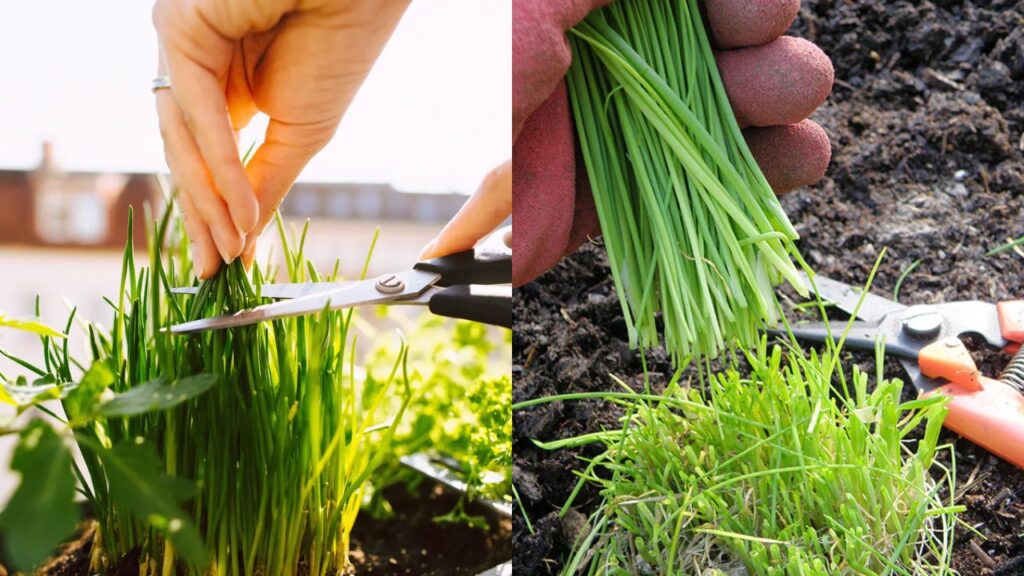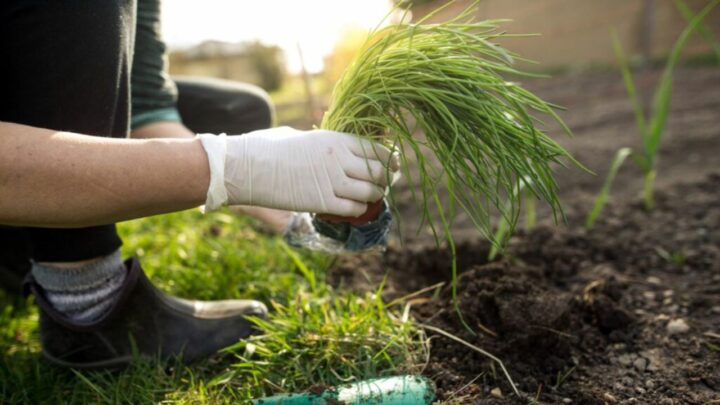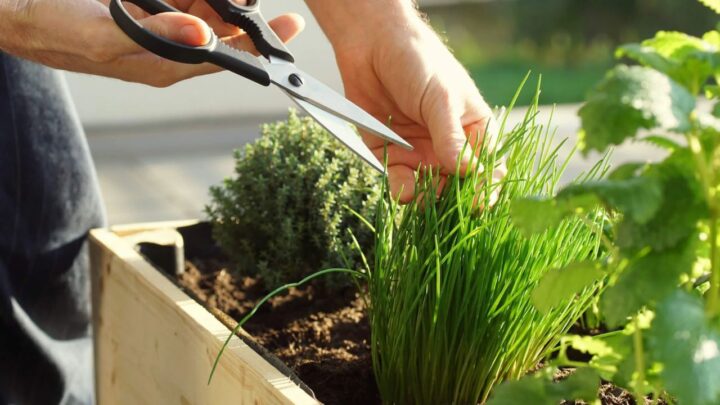Double Your Chive Harvest Fast – Learn the easy trick to divide overgrown plants and boost your kitchen garden yield effortlessly. This simple yet powerful technique helps you grow more chives without spending extra money or effort.

Why Dividing Overgrown Chives Helps Boost Growth
Chives are one of the easiest herbs to grow, but over time, they tend to form dense clumps that slow down their growth. Dividing these clumps allows fresh shoots to emerge and encourages stronger, healthier plants. This method gives your chives new energy and ensures a consistent supply of flavorful leaves all season long. By simply splitting and replanting your overgrown chives, you can double your chive harvest and improve your garden’s productivity in just a few days.
Best Time to Divide Chive Plants
The ideal time to divide your chive plants is during early spring or fall when the weather is mild and the soil is moist. Avoid dividing them during extreme heat, as the stress can damage the roots. When done at the right time, the plants recover quickly and begin producing new shoots almost immediately. Gardeners who regularly perform this division every 2–3 years often report stronger, greener, and more aromatic leaves with minimal effort.
 Transform Plastic Bottles Into a Tower Garden – 3-Story Strawberry DIY Every Home Grower Must Try
Transform Plastic Bottles Into a Tower Garden – 3-Story Strawberry DIY Every Home Grower Must Try
Tools and Materials You’ll Need
Before you start, gather all the essential tools to make the process easier and cleaner. Having the right tools ensures minimal root damage and helps your plants adapt faster after replanting. Here’s what you’ll need:
- Garden spade or small shovel for digging up clumps
- Sharp knife or hand pruners for clean cuts
- Compost or organic fertilizer to enrich soil
- Watering can for gentle watering post-division
- Gloves to protect your hands while handling roots
Step-by-Step Guide to Divide Overgrown Chives
- Step 1: Uproot the Chive Clump
Start by gently digging around the chive plant, keeping a few inches away from the base. Lift the entire clump from the soil, being careful not to break the roots. Shake off excess dirt so you can clearly see where to divide the sections.

- Step 2: Separate the Clump
Use your hands or a sharp knife to split the clump into smaller portions. Each section should have at least 5–6 bulbs or shoots attached. Dividing too small can slow regrowth, so aim for healthy mid-sized divisions.
- Step 3: Replant Immediately
Replant the divided clumps into fresh, well-draining soil. Space each section about 6–8 inches apart to allow new shoots to expand. Firmly press the soil around the roots and water thoroughly after planting.
- Step 4: Water and Feed
Keep the soil evenly moist for the first two weeks to help the roots establish. After a few days, apply a light compost layer or diluted organic fertilizer to encourage rapid growth and greener leaves.
- Step 5: Trim for Health
Once the chives start producing fresh shoots, trim them regularly. Frequent harvesting keeps the plants healthy, prevents flowering too early, and promotes continuous regrowth throughout the season.

Extra Tips for Faster Chive Growth
- Use well-drained, nutrient-rich soil to prevent root rot.
- Water consistently but avoid overwatering.
- Harvest leaves every 10–14 days to stimulate new shoots.
- Apply compost or organic matter twice a year for stronger flavor.
- Keep chive beds weed-free to avoid nutrient competition.
FAQs
How often should I divide chive plants?
Every 2–3 years is ideal for dividing chives. This helps prevent overcrowding and keeps plants vigorous and productive.
Can I divide chives in summer?
It’s not recommended, as heat can stress the plants. Spring and fall are the best seasons for safe and quick recovery.
Do divided chives need fertilizer?
Yes, applying compost or mild organic fertilizer after division helps new roots establish faster and boosts leaf production.
Can I grow chives indoors after dividing?
Absolutely! You can replant a few divisions in pots near a sunny window for fresh kitchen herbs year-round.
Ending on a high note — dividing chives is one of the easiest ways to rejuvenate your herb garden and multiply your harvest without spending a cent. With a little time and care, you’ll enjoy lush, fragrant chive plants that keep giving back season after season. So grab your spade, roll up your sleeves, and let your garden thrive!



